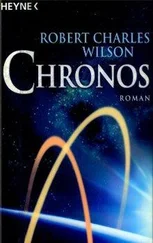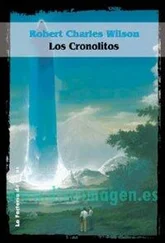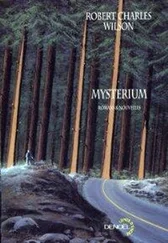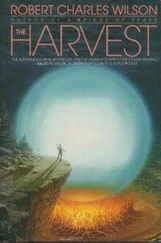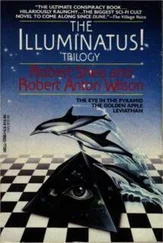Robert Wilson - SCHRODINGER'S CAT TRILOGY
Здесь есть возможность читать онлайн «Robert Wilson - SCHRODINGER'S CAT TRILOGY» весь текст электронной книги совершенно бесплатно (целиком полную версию без сокращений). В некоторых случаях можно слушать аудио, скачать через торрент в формате fb2 и присутствует краткое содержание. Жанр: Триллер, на английском языке. Описание произведения, (предисловие) а так же отзывы посетителей доступны на портале библиотеки ЛибКат.
- Название:SCHRODINGER'S CAT TRILOGY
- Автор:
- Жанр:
- Год:неизвестен
- ISBN:нет данных
- Рейтинг книги:5 / 5. Голосов: 1
-
Избранное:Добавить в избранное
- Отзывы:
-
Ваша оценка:
- 100
- 1
- 2
- 3
- 4
- 5
SCHRODINGER'S CAT TRILOGY: краткое содержание, описание и аннотация
Предлагаем к чтению аннотацию, описание, краткое содержание или предисловие (зависит от того, что написал сам автор книги «SCHRODINGER'S CAT TRILOGY»). Если вы не нашли необходимую информацию о книге — напишите в комментариях, мы постараемся отыскать её.
SCHRODINGER'S CAT TRILOGY — читать онлайн бесплатно полную книгу (весь текст) целиком
Ниже представлен текст книги, разбитый по страницам. Система сохранения места последней прочитанной страницы, позволяет с удобством читать онлайн бесплатно книгу «SCHRODINGER'S CAT TRILOGY», без необходимости каждый раз заново искать на чём Вы остановились. Поставьте закладку, и сможете в любой момент перейти на страницу, на которой закончили чтение.
Интервал:
Закладка:
Thus, they guaranteed that the murder rate in Unistat would always be the highest in the world. This kept the citizens in perpetual anxiety about their safety both on the streets and in their homes. The citizens then tolerated the rapid growth of the Police State, which controlled almost everything, except the sale of guns, the chief cause of crime.
THE BACHS' BOX
The Wilhelm Friedemann Bach Society was in the same downtown Washington building as the Warren Belch Society and the Invisible Hand Society, but Clem Cotex never thought much about them. He assumed, as did everybody else who noticed the name on the building directory, that the W. F. Bach Society was just a group of musicologists.
Nothing could have been further from the truth.
They were also trying to find out "what the hell is really going on."
This odd fraternity had named themselves after W. F. Bach not just for his music, which was superb, but for his effrontery, which was even more superb. Wilhelm Friede-mann Bach, one of the twenty children of Johann Sebastian Bach, did not have the easy and immediate success of his brothers, Johann Christian Bach and Carl Philipp Eman-uel Bach. In fact, because he was original and because he had to compete with the other three Bachs (already well established in the esteem of music lovers), Wilhelm Friedemann was neglected for a long time and might have ended his days in poverty and obscurity. But W. F. Bach was not the sort of man to take defeat easily. He hit on a plan which caused his music to be played everywhere, and made him quite a bundle of Deutschmarks, even though people were still saying he was the least important of the Bachs.
Wilhelm Friedemann had simply sold his compositions, one by one, as newly discovered work by his father, J. S. Bach.
Of course there had been art forgers and music forgers and even novel forgers both before and after W. F. Bach, but he had raised the philosophical ante on the bothersome question "If a work of art cannot be distinguished from a masterpiece, is it not a masterpiece?" or, in the vernacular, "How important is a Potter Stewarting signature, anyway?"
The original members of the W. F. Bach Society were people who had owned some magnificent Van Goghs back in the 1960s. Then one traumatic day, they did not own any Van Goghs at all. They owned El Mirs.
El Mir was the most talented painting forger of that time. His Van Goghs, Cezannes, and Modiglianis were totally indistinguishable from "the real thing," whatever that is. It was widely believed, after El Mir was exposed by another forger named Irving, that many masterpieces still hanging in museums were El Mir's work. Indeed, El Mir insisted on that, regarding it as the cream of the jest.
Some said that these El Mirs still hung in museums because the experts had not yet found any way to distinguish them from "real" art. Others said that the experts, once aware of El Mir's work, could distinguish it from Van Gogh's or Cezanne's or Modigliani's, but would not do so, because they had authenticated the fakes originally and did not want anybody to know that they had been fooled.
Blake Williams, Ph.D., had purchased a very fine El Mir, under the impression it was a Van Gogh, after the great success of his popularized book on primate psychology, How to Tell Your Friends from the Apes. Williams was then in the midst of his first phase synthesizing General Semantics and Zen Buddhism, and he immediately recognized what was really going on when identifiable El Mirs were everywhere falling in value after the great Expose.
It was a glitch, he decided.
He called together a small group of people who also owned identified El Mirs and begged them not to believe that they had been deceived.
"A signature," he told them earnestly, "is not an economic Good in itself, like gold or land or factories. It is only a squiggle given contextual meaning by social convention."
He went on like that for nearly an hour. He spoke of the differences between the map and the territory; between the spoken word ("a sonic wave in the atmosphere") and the nonverbal thing or event which the word merely designates; between the menu and the meal. He quoted Hume, Einstein, Korzybski, and Pope Stephen. He dragged in the latest theories in perception psychology, Ethnome-thodology, and McLuhan's version of media-message analysis.
He reminded them that Carlos Castaneda had studied Ethnomethodology with Garfinkle before studying shamanism with Don Juan Matus, and he assured them, as a professional anthropologist, that anyone who has the power to define reality for you has become a sorcerer, if you don't catch the bastard real quick.
By this time a lot of his audience was irritated and a little frightened-mutters of "He's just a damned crank" were heard from some corners of the room-but others were listening, enthralled.
Williams resorted to psycho-drama and Role Playing to get his point across. He said that he would pretend to be an extraterrestrial-"I wonder if it's just pretending," said an awed voice from the group who had followed this lecture with a sense of Illumination. Play-acting the extraterrestrial, Williams defied them to explain several things to him, rationally and logically, without assuming he had "intuitive" or a priori knowledge about what they took for granted.
He wanted to know, first, the difference between a dollar bill printed by the Unistat Treasury and a dollar bill printed by a gang of counterfeiters.
Everybody got excited, and most of them got angry, in the course of trying to make this distinction clear to the extraterrestrial, who was very literal and logical, and did not understand anything they took for granted until it was explained literally and logically.
By the time the extraterrestrial was willing to grant that there was an agreed-upon difference between the two bills created by social consensus, a few people had left, saying, "It's just an elaborate put-on."
But the others, who stuck it out, were next confronted with a dollar bill hung in a museum as "found" art. Williams, the extraterrestrial, wanted to know whether its value was the same as, greater than, or less than it had been before being hung in the museum.
More people lost their tempers in the course of his discussion.
But Williams persisted. Still playing extraterrestrial, he wanted to know if it made any difference if the dollar hung in the museum as "found" art had been printed by the Treasury or by the criminal gang.
After a few minutes of this topic most of the people in the room were jumping up and down like the Ambassador who found the Rehnquist on the stairs.
Williams had no mercy. He next wanted them to explain the difference between any or all of the above and an exact duplicate of any or all of them painted by Roy Lichtenstein and exhibited as Pop Art.
After a half hour more he pointed out that they were arguing among themselves even more than they were attempting to explain these mysteries to him. He also mentioned, not too cruelly, that many of them had arrived at the state where they seemed to believe their definitions would become more convincing if they just repeated them at a louder decibel level.
Williams then gave up the extraterrestrial game and tried to restore order. He became droll and told them the old story of how Picasso, asked to identify the real Picas-sos in a group of possible fakes, had put one of his own canvases among the fraudulent group. "But," an art dealer among those present protested, "I saw you paint that one myself, Pablo."
"No matter," said the Great Man imperturbably, "I can fake a Picasso as well as anybody."
He reminded them that Andy Warhol kept a closet full of Campbell's soup cans, and gave autographed cans to people he liked so they could own "a genuine Warhol." He pointed out, after the laugh subsided, that neither extraterrestrials nor terrestrials could agree on the difference in value between a Treasury dollar signed by Warhol and thereby becoming "a genuine Warhol," a counterfeit dollar signed by Warhol for the purpose-giving "a genuine Warhol" to a friend, a Treasury dollar with Warhol's signature forged by El Mir, a Treasury dollar with Warhol's signature forged by an unknown criminal, and a counterfeit dollar with Warhol's signature forged by William S. Burroughs, the founder of Neo-Cubist painting.
Читать дальшеИнтервал:
Закладка:
Похожие книги на «SCHRODINGER'S CAT TRILOGY»
Представляем Вашему вниманию похожие книги на «SCHRODINGER'S CAT TRILOGY» списком для выбора. Мы отобрали схожую по названию и смыслу литературу в надежде предоставить читателям больше вариантов отыскать новые, интересные, ещё непрочитанные произведения.
Обсуждение, отзывы о книге «SCHRODINGER'S CAT TRILOGY» и просто собственные мнения читателей. Оставьте ваши комментарии, напишите, что Вы думаете о произведении, его смысле или главных героях. Укажите что конкретно понравилось, а что нет, и почему Вы так считаете.




